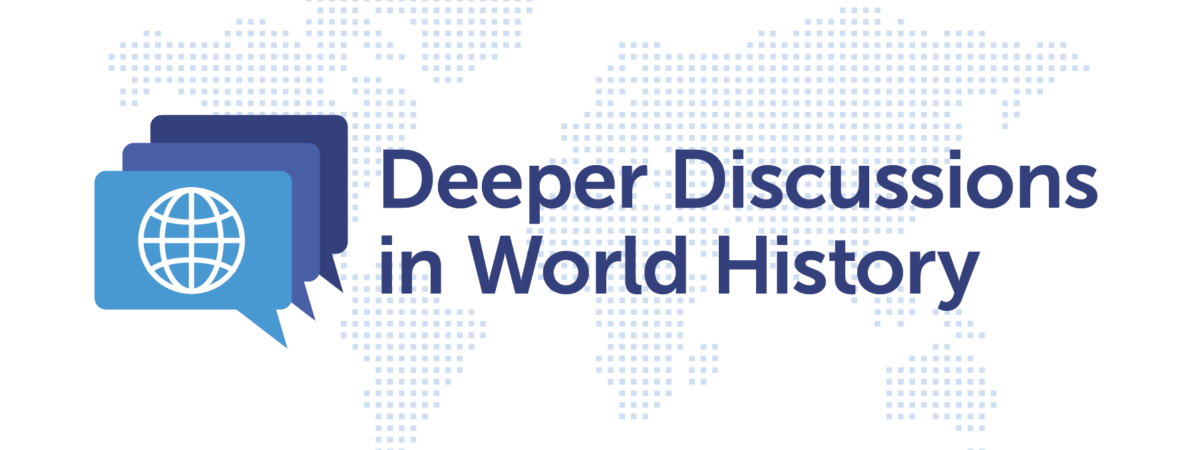
“…Over the 15 years I have taught students of various levels, I have learned that students who engage in discussion and ask questions about history get the most out of it. Those are the students who fall in love with history, have ‘ah-ha’ moments, and come to me years later with connections they have made.”
Krystle L. Ammann, World history teacher at Millville High School in New Jersey
Opportunities to support and engage students in world history discussions require a change in curriculum and perspective. Students can bring in a wealth of cultural knowledge and experiences that are directly relevant to what we want them to learn from world history. Facilitating productive discussions can be difficult if we want students to both make personal connections with the content and learn information that may not relate to their experiences. In other words, we want them to use history as both a mirror to know themselves better and as a window through which to understand new worlds.
Teachers face a number of barriers in enacting meaningful student-to-student discussions. To name a few, world history standards span long periods of time and multiple regions, and teachers can feel pressured to cover content, prioritizing breadth over depth. When discussions are not already embedded within curricular materials, adding them in can feel overwhelming, and teachers tend to default to recitation and lecture. How can a single teacher manage such essential learnings with a classroom full of students with differing backgrounds, interests, experiences, and values?
Digital Promise, Dr. Abby Reisman (University of Pennsylvania), and OER Project (designer of an open-access world history curriculum designed to be “free for all, forever”), is launching a project to address these challenges. We will be partnering with a design team of passionate 9th and 10th grade world history educators to create Deeper Discussions, a suite of open-access materials to help world history teachers facilitate productive student discussions in their classrooms. The materials, designed to be motivating and attractive to students and teachers alike, include self-paced professional development modules and discussion-based lessons and teacher guides.
An important aspect of the project is to center students who are historically underserved, specifically students of color and students from economically disadvantaged communities, in designing these materials. We plan to incorporate Gholdy Muhammad’s Historically Responsive Literacy Framework (2020) as part of the lesson design template and as part of the teacher professional development series. This means that design teams will ask questions such as: how will this lesson provide students opportunities to make sense of who they are; how are the historical issues in this lesson relevant to our students’ lives; whose voices and perspectives are present in primary and secondary sources that students will analyze; and how will students source historical documents in ways that help them develop historical empathy and better understand the complex contexts within which documents were written.
“I feel this project is an important contribution because we need to do more to foster discussion in world history classrooms, especially for students of color whose voices have been traditionally marginalized both in historical narratives and in the classroom.”
Jennie M. Ekstein, Social studies curriculum specialist, Milwaukee Public Schools
At the conclusion of this four-year project, all final materials will be made freely accessible. They will be embedded within the existing OER Project’s World History Project curriculum, and also hosted on Digital Promise’s project site.
Follow along with our work and support our journey by signing our project interest form here.